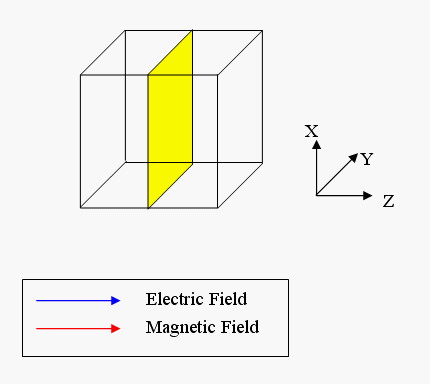Rectangular Cavity Resonator for TE Mode
Editors:杜俊毅、陳禎祐
Advisor:江簡富教授
There are two sets of modes, TE modes and TM modes, that can exist in a rectangular cavity resonator as shown in Fig.1.13.
Following the same procedure as in the last section, the transverse electric and magnetic fields can be expressed in terms of the
Ez and Hz components which satisfy the wave equation. The boundary conditions require that
(1) Ey = Ez = 0 at x = 0 and x = a, (2) Ez = Ex = 0 at y = 0 and y = b, and (3) Ex = Ey = 0 at z = 0 and z = d.
As a
result, standing-wave forms are taken in all the
![]() ,
,
![]() and
and
![]() directions,
and three sets of guidance conditions are obtained
directions,
and three sets of guidance conditions are obtained
as kx = mπ/a, ky = nπ/b, and kz = pπ/d.
For the TE mode, Ez = 0, and


with m, n = 0, 1, 2, · · ·, m2 + n2≠0, p = 1, 2, · · ·. The wave numbers and the frequency satisfy the dispersion relation
(mπ/a)2 + (nπ/b)2 + (pπ/d)2 = ω2με. Thus, the resonant frequency of the TEmnp mode can be expressed as





![]()
![]()
a=5, b=5, d=5
(1) TE101 Mode
Electric and Magnetic Field in Cross Section of the Rectangular Cavity Resonator



(2) TE011 Mode
Electric and Magnetic Field in Cross Section of the Rectangular Cavity Resonator



(3) TE111 Mode
Electric and Magnetic Field in Cross Section of the Rectangular Cavity Resonator


